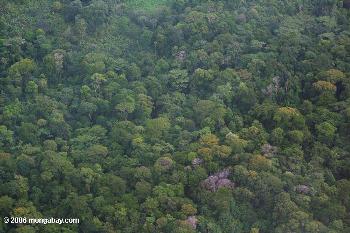Ever since humans entered the stage, nature has been providing us with a wide-variety of essential and ‘free’ services: food production, pollination, soil health, water filtration, and carbon sequestration to name a few. Experts have come to call these ‘ecosystem services’. Such services, although vital for an inhabitable planet, have largely gone undervalued in the industrial age, at least officially. Yet as environmental crises pile one on another across the world, a growing number of scientists, economists, environmentalists, and policy-makers are beginning to consider putting a monetary value on ‘ecosystem services’.
“An important reason for the alarming rate of environmental destruction across the world is that the true value of ecosystems is largely invisible to markets. When we raze forests or build on wetlands, the loss of the essential services they provide […] does not show up on any balance sheet,” writes Ricardo Bayon and Michael Jenkins in a new opinion piece in Nature which briefly outlines a number of ways how pricing ecosystem services might work and how some nations have already begun incorporating such costs.
 Just how much is this unbroken rainforest in Panama worth? Photo by: Rhett A. Butler. |
Bayon, co-founder of EKO Asset Management Partners, and Jenkins, president of Forest Trends, point to the Amazon rainforest as an example of how putting ecosystem services into the market would optimally work to conserve, rather than despoil, the world’s ecosystems.
“Imagine, for example, that the Brazilian government introduces regulation that imposes a value on the environmental services of a rainforest. The regulation would make it more expensive to destroy the rainforest, thereby increasing the production costs of whatever replaces it, for example, soya beans or cattle. As these costs would be passed on to the consumer, this would push people and companies to find ways of producing without destroying the ecosystem. At the same time, it would make it more profitable to protect the rainforest, thus creating a market for conservation.”
The authors explore a number of ways in which a price may be put on ecosystem services, including adding a surcharge on those who consume a resource to pay for preservation, or encouraging private corporations to pay for the preservation of the resources they exploit, for example drink companies paying to conserve the watersheds on which their products depend.
“On one level, private and voluntary payment and trading schemes are more effective than government surcharges. This is because those who benefit are the ones paying, and those who pay for the use of resources are more likely to use them efficiently. However, private initiatives are generally small-scale,” the authors write.
They argue that to really change the way companies and people value nature’s free gifts, it will be necessary to install “national or global environmental markets that are driven by governmental regulation”. The essay points to the global carbon market, as well as the US’s national mitigation scheme on preserving wetlands.
“Under this system, a business wishing to carry out development that will damage a wetland of national importance is granted a permit only if it agrees to compensate for the damage by restoring or enhancing a wetland of similar function and value in the same watershed. Instead of taking on the restoration itself, the business can purchase ‘mitigation credits’ from an organization that has already done the work,” the authors write.
The nascent Office of Environmental Markets has been established in the US to coordinate ecosystem services and their emerging markets.
In the end, the authors argue, creating a sustainable world may be as simple as putting a market value on nature.
CITATION: Ricardo Bayon and Michael Jenkins. The Business of Biodiversity. Nature. Volume 466. July 8th, 2010.
Related articles
New UN panel to focus on saving life on Earth
(06/14/2010) In South Korea last week 230 delegates from 85 nations approved a new UN science panel focusing on saving life on Earth, known as the Intergovernmental Science Policy Platform on Biodiversity and Ecosystem Services (IPBES). The panel, which is to be modeled off of the Intergovernmental Panel on Climate Change (IPCC), is meant to bridge the gap between scientific understanding of biodiversity loss and the policy decisions necessary to stop it.

(05/03/2010) Over the past 30 years billions of dollars has been committed to global conservation efforts, yet forests continue to fall, largely a consequence of economic drivers, including surging global demand for food and fuel. With consumption expected to far outstrip population growth due to rising affluence in developing countries, there would seem to be little hope of slowing tropical forest loss. But some observers see new reason for optimism—chiefly a new push to make forests more valuable as living entities than chopped down for the production of timber, animal feed, biofuels, and meat. While are innumerable reasons for protecting forests—including aesthetic, cultural, spiritual, and moral—most land use decisions boil down to economics. Therefore creating economic incentives to maintaining forests is key to saving them. Leading the effort to develop markets ecosystem services is Forest Trends, a Washington D.C.-based NGO that also organizes the Katoomba group, a forum that brings together a wide variety of forest stakeholders, including the private sector, local communities, indigenous people, policymakers, international development institutions, funders, conservationists, and activists.
Where do forest carbon markets go from here?
(04/20/2010) For thousands of years, we have been planting and growing trees without difficulty. It’s simple, and forest carbon business strategy can be, too. In fact, it’s core to what I’m trying to teach the MBA/MS students in my course at the Erb Institute this semester: If the world’s best available technology for removing carbon dioxide from the atmosphere is employing the natural photosynthetic capacity of natural forest management, we can too.